Perennial gardening is like cultivating an enduring friendship, one that rewards patience and care with blooms and greenery year after year. Whether you’re a novice just dipping your toes into the rich soil of gardening or a seasoned enthusiast with a thriving patch, understanding the tools that aid in perennial care is paramount to nurturing healthy, flourishing plants. The right tools aren’t merely accessories; they are extensions of your hands, transforming your gardening efforts into a beautiful and sustainable landscape.
Embarking on the journey of perennial care might feel overwhelming without guidance, but with the right equipment, it becomes a delightful adventure. In this article, we’ll explore nine essential tools that will become your trusted allies in the garden, making tasks easier and more enjoyable. From the precision of pruning shears to the versatility of a sturdy hand trowel, you’ll discover how each tool plays a crucial role in the health and longevity of your perennials. By the end, you’ll be equipped with the knowledge to enhance your gardening toolkit, ensuring your garden not only survives but thrives through the seasons.
Understanding Perennial Pruning Shears

Perennial pruning shears are an essential tool for maintaining the health and appearance of your perennial plants. These shears make it easy to remove dead or damaged foliage, encouraging growth and improving overall plant vigor.
When choosing pruning shears, look for those with sharp, high-quality blades to ensure clean cuts. Clean cuts minimize damage to the plant’s tissue, reducing the risk of disease and promoting faster healing.
Regular maintenance of your pruning shears is key to their longevity and effectiveness. After each use, wipe the blades with a clean, damp cloth and apply a light coat of oil to prevent rusting.
Using pruning shears correctly can greatly enhance your gardening efforts. Always cut at a slight angle above a leaf node or bud to encourage new growth in the desired direction.
Choosing Durable Gardening Gloves

When selecting durable gardening gloves, consider materials like leather or synthetic leather, as they offer excellent protection and durability. These gloves are ideal for handling thorny perennials like roses, as they shield your hands from scratches and punctures.
Investing in a pair of gloves with reinforced fingertips can be particularly advantageous for tasks like digging or handling heavy tools. This feature not only extends the lifespan of the gloves but also enhances your grip, making it easier to manage perennial care tasks efficiently.
For gardeners in wetter climates, gloves with a waterproof lining are essential to keep your hands dry and comfortable during rainy seasons. Look for gloves with a breathable design to prevent moisture buildup, which can lead to discomfort and skin irritation.
Additionally, consider gloves with adjustable wrist closures to ensure a secure fit and prevent dirt from entering while you work. A snug fit allows for better dexterity, crucial for delicate tasks such as deadheading flowers or planting young perennials.
Investing in Quality Hand Trowels

Having a quality hand trowel in your gardening kit is essential for effective perennial care. A well-made trowel can make tasks like planting, transplanting, and soil aeration much easier, saving you both time and effort.
When selecting a hand trowel, look for one with a sturdy, rust-resistant blade and an ergonomic handle. A comfortable grip is crucial for reducing hand fatigue during extended gardening sessions, especially when dealing with tough or compacted soil.
For beginners, a lightweight trowel made from stainless steel or aluminum is often the best choice. These materials offer durability without adding extra weight, making them easy to handle and maintain.
Experienced gardeners might opt for a slightly heavier model with a wider blade for more efficient digging. Consider the soil conditions in your garden; if you have clay soil, a robust trowel is particularly beneficial for breaking through dense patches.
Additionally, ensure your trowel has clear measurement markings on the blade for planting bulbs or seeds at the correct depth. This simple feature can significantly improve your planting accuracy, leading to healthier growth and more vibrant blooms.
Regular maintenance, such as cleaning the blade after use and storing it in a dry place, will extend the life of your trowel. A well-cared-for tool is not only more effective but also provides a more enjoyable gardening experience.
Efficient Watering with Soaker Hoses
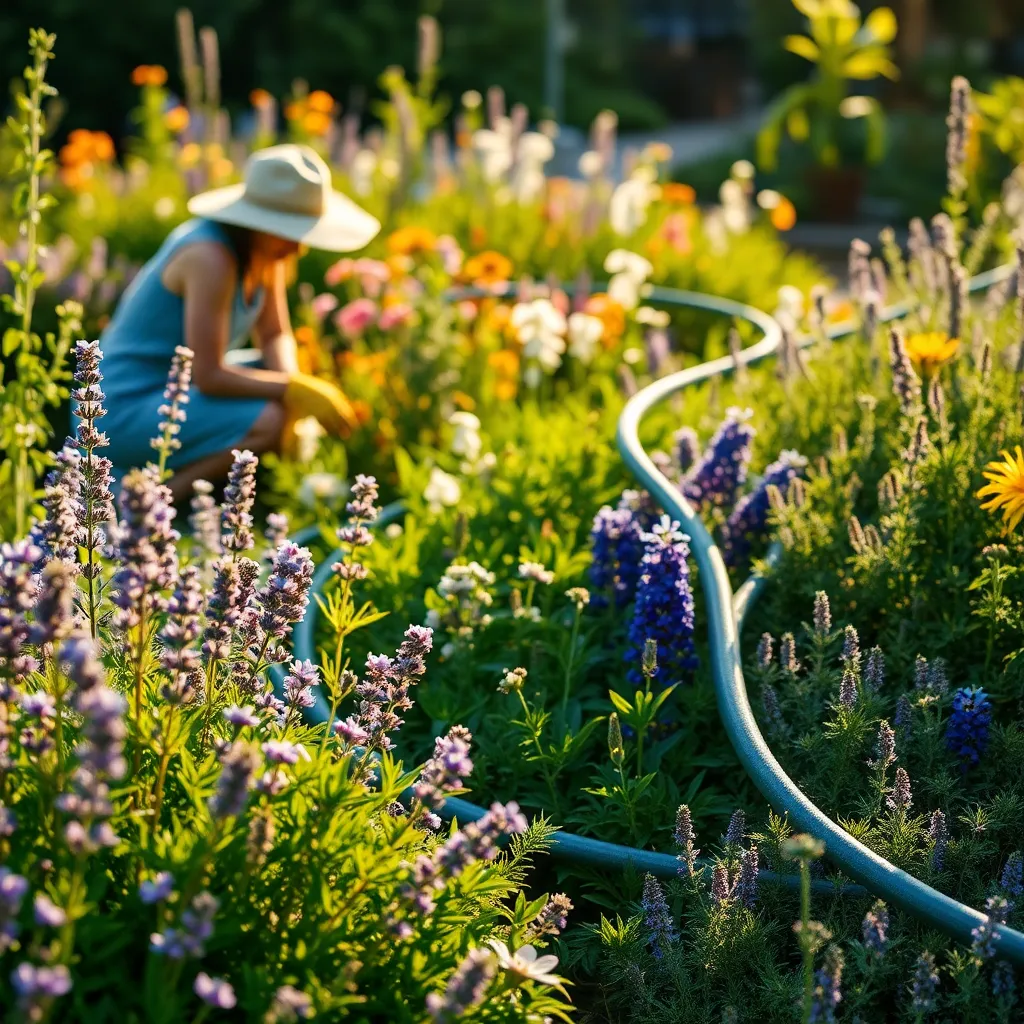
Soaker hoses are an efficient and cost-effective way to keep your perennials hydrated without wasting water. By delivering moisture directly to the soil, they minimize evaporation and ensure that water reaches the roots where it’s needed most.
Consider laying your soaker hoses on a slightly sloped surface to allow gravity to assist in even water distribution. It’s important to place them under mulch; this not only disguises the hoses but also helps retain soil moisture.
Spacing is crucial for optimal water delivery; lay hoses about 12 to 18 inches apart, depending on your soil type. For clay soils, which retain water longer, you might space them a bit further apart, while sandy soils may require closer spacing.
For best results, water in the early morning when evaporation rates are lower and plants can absorb moisture throughout the day. If you’re dealing with hotter climates, consider extending watering times or increasing frequency to ensure your perennials remain lush and healthy.
Optimal Use of Garden Forks
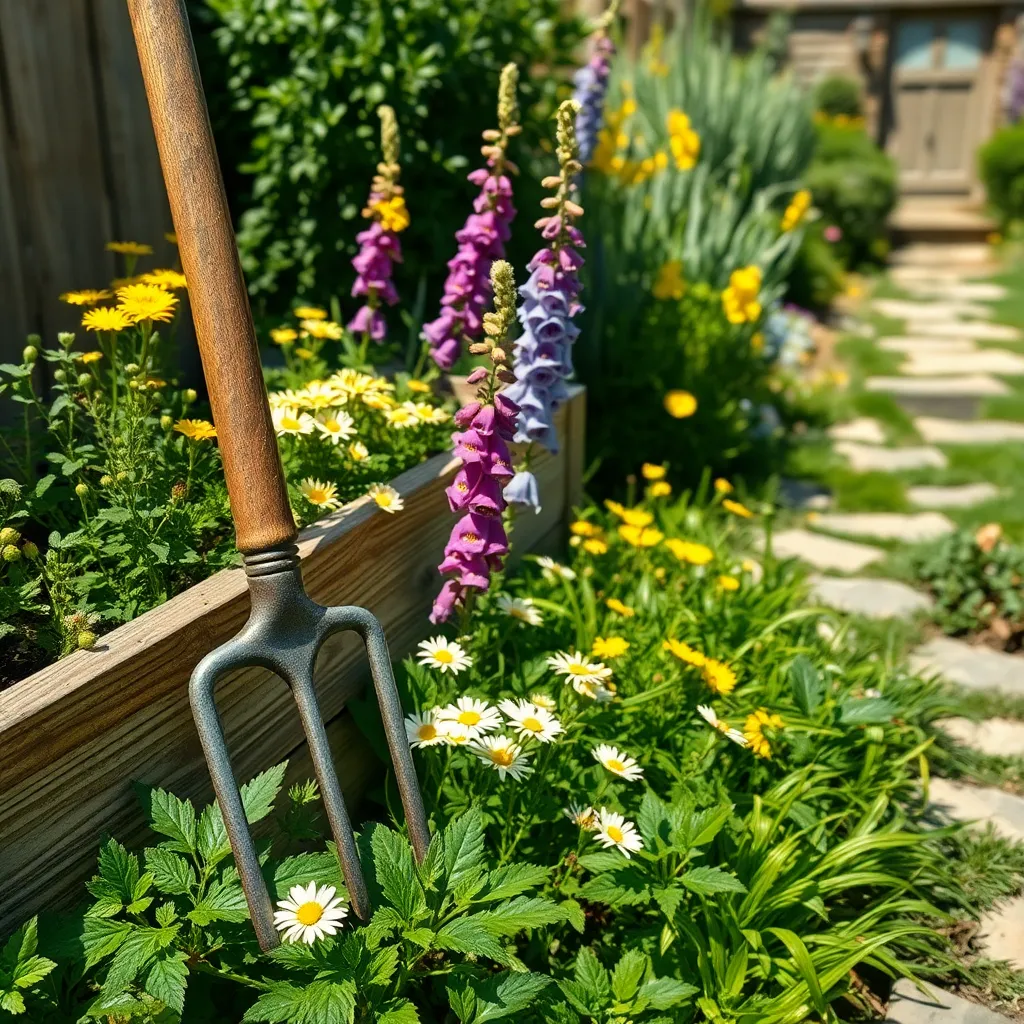
Garden forks are invaluable tools for loosening soil, especially in perennial beds where roots need space to grow. When using a garden fork, ensure you insert it into the soil at a slight angle to effectively break up compacted earth without harming the roots.
For those new to gardening, start with a standard fork with four tines, which works well for most soil types. If your soil is particularly heavy or clay-like, consider a fork with broader tines to make the task more manageable.
Experienced gardeners can take advantage of garden forks to incorporate organic matter like compost into the soil, improving its structure and fertility. Regularly turning the soil with a fork also helps aerate it, promoting beneficial microbial activity essential for plant health.
It’s crucial to clean and maintain your garden fork after each use to prolong its life and effectiveness. Simply rinse off dirt and debris, and occasionally apply a light coat of oil to prevent rust, ensuring your tool remains in top condition for seasons to come.
Precision with Planting Dibbers
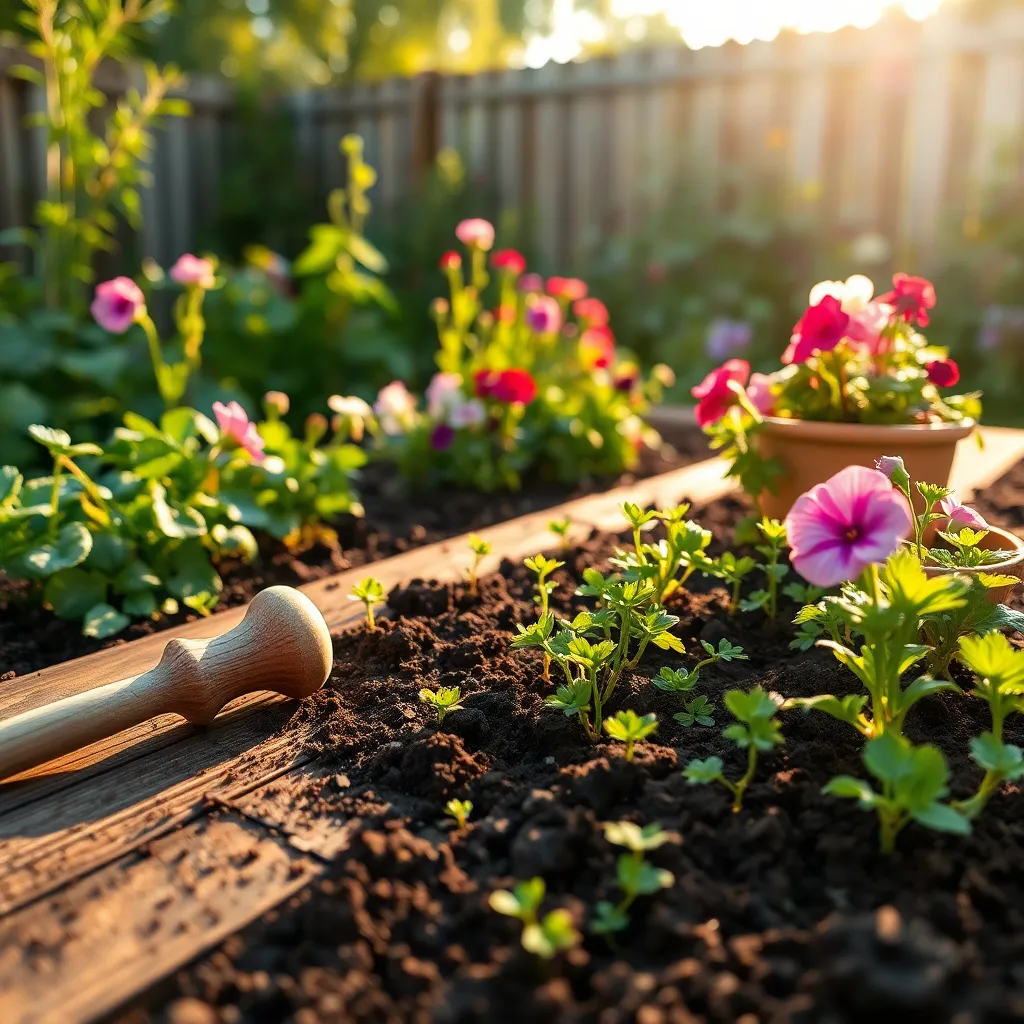
When it comes to planting perennials with precision, a planting dibber is an invaluable tool. This tool allows you to create uniform holes for seeds or seedlings, ensuring that each plant has the space it needs to thrive.
Consider the type of soil in your garden to maximize the effectiveness of your dibber. Loamy soils work best, as they allow the dibber to create neat, consistent holes, while clay soils might require a bit more force and patience.
For beginners, start by selecting a dibber with a comfortable grip to reduce strain during extended planting sessions. As you gain experience, you might explore different types of dibbers, such as those with depth markings, which help ensure you plant at the correct depth every time.
Advanced gardeners can use dibbers to experiment with planting patterns, optimizing space and aesthetics. Try planting in staggered rows or circular patterns to make the most of your garden space and enhance its visual appeal.
Versatile Garden Kneeling Pads
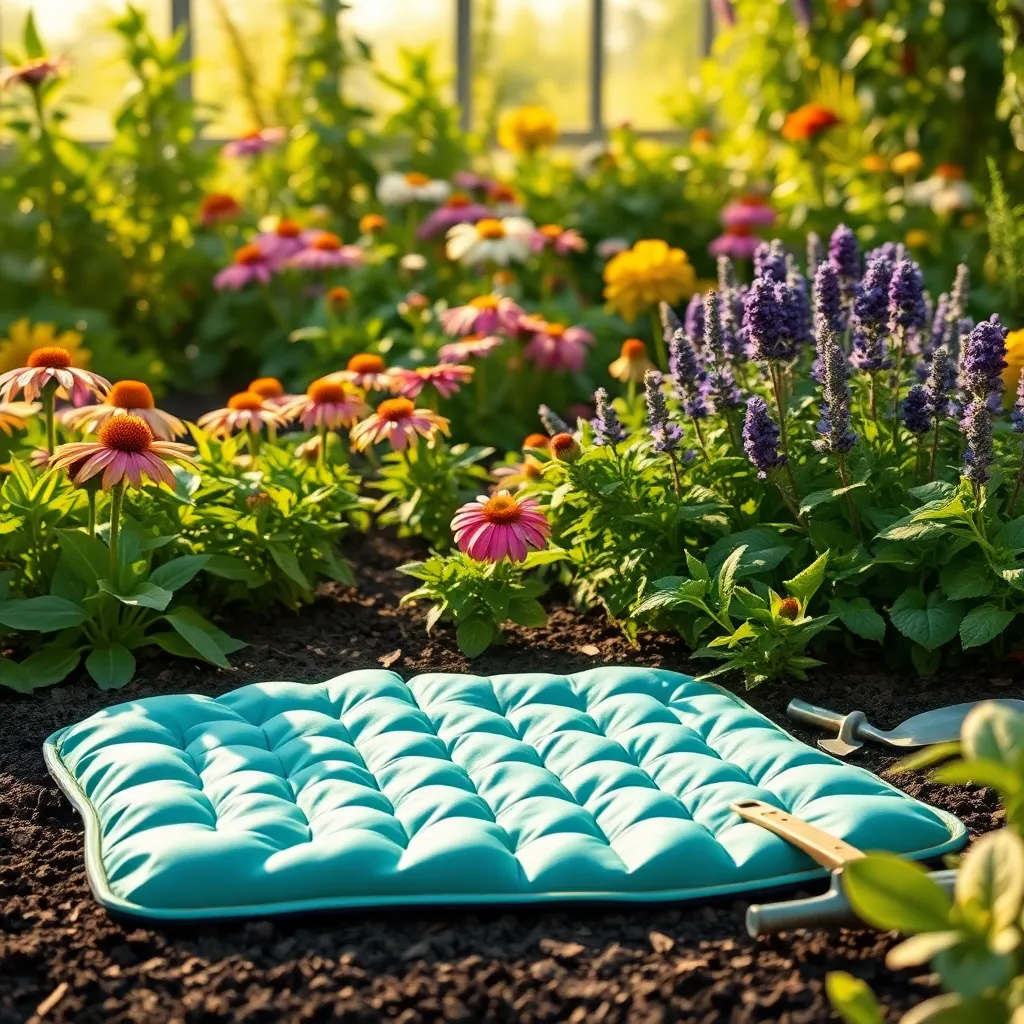
Garden kneeling pads are an often overlooked but essential tool that can vastly improve your gardening experience. Not only do they provide comfort, but they also protect your knees from dampness and dirt, making them a practical addition to your gardening toolkit.
Using a kneeling pad can help you maintain better posture while working close to the ground, reducing strain on your back and knees. This is particularly beneficial when planting or weeding in your perennial beds where soil beds need consistent care and attention.
Look for pads that are made from durable, water-resistant materials, ensuring they can withstand frequent use and various weather conditions. Some models offer handles or straps for easy portability, allowing you to move them around your garden effortlessly.
For those who enjoy crafting a neatly organized garden, consider pads with removable covers that are machine washable for easy cleaning. Choose pads with at least one inch of thick foam for optimal support, ensuring you can enjoy long gardening sessions without discomfort.
Benefits of a Sturdy Wheelbarrow
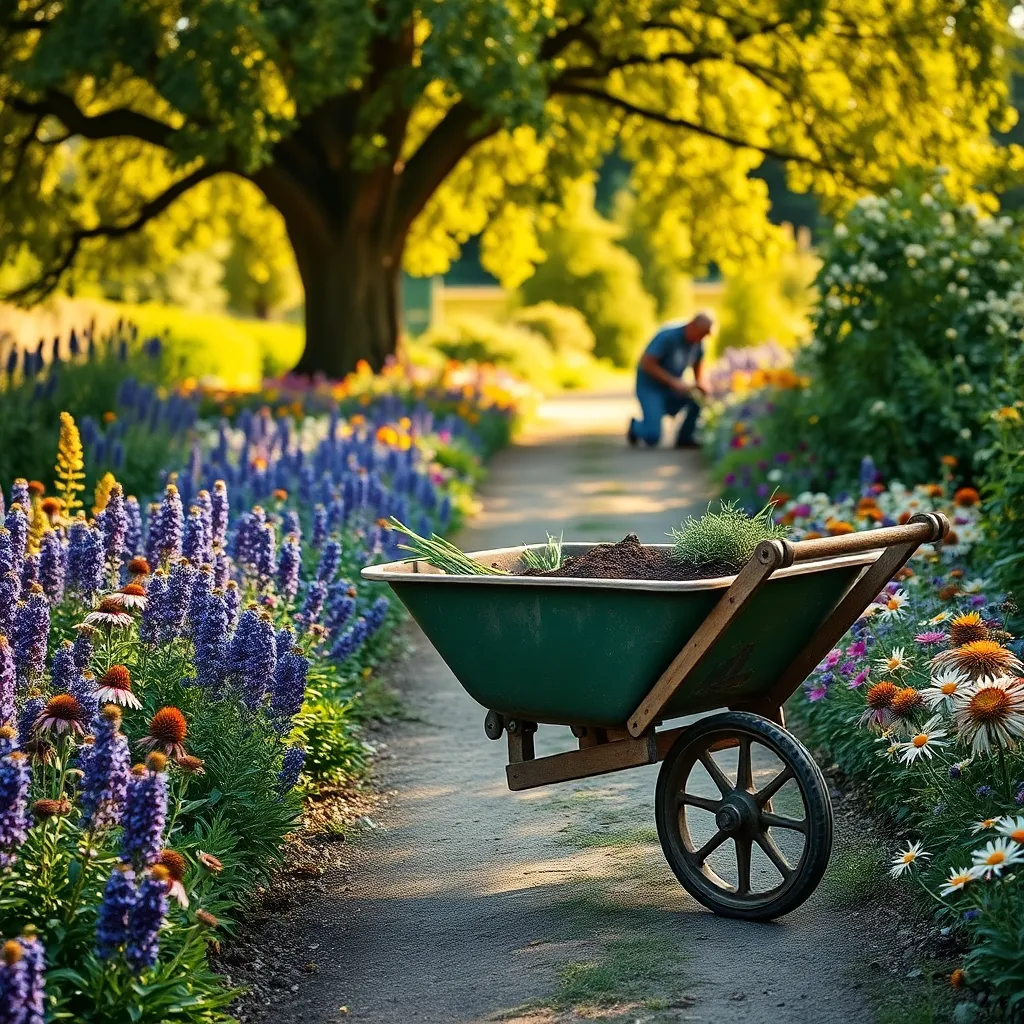
A sturdy wheelbarrow is essential for managing the physical demands of perennial care. It allows you to transport soil, mulch, and plants effortlessly, reducing strain on your back and making your gardening tasks more efficient.
When selecting a wheelbarrow, look for one with a robust frame and a durable wheel that can handle uneven terrain. Opt for a wheelbarrow with a rust-resistant coating to ensure longevity, especially if you frequently work in wet conditions.
For beginners, a smaller, lightweight wheelbarrow may suffice, but experienced gardeners might prefer a larger model to handle bulkier loads. Consider the terrain of your garden—a single-wheel design offers better maneuverability in tight spaces, while dual wheels provide stability on slopes.
Advanced gardeners can use a wheelbarrow to mix their own soil blends directly in the tray, ensuring consistency and saving time. Experiment with soil recipes by combining compost, perlite, and peat moss to suit the specific needs of your perennials, promoting healthier growth.
Maintaining Tools for Longevity
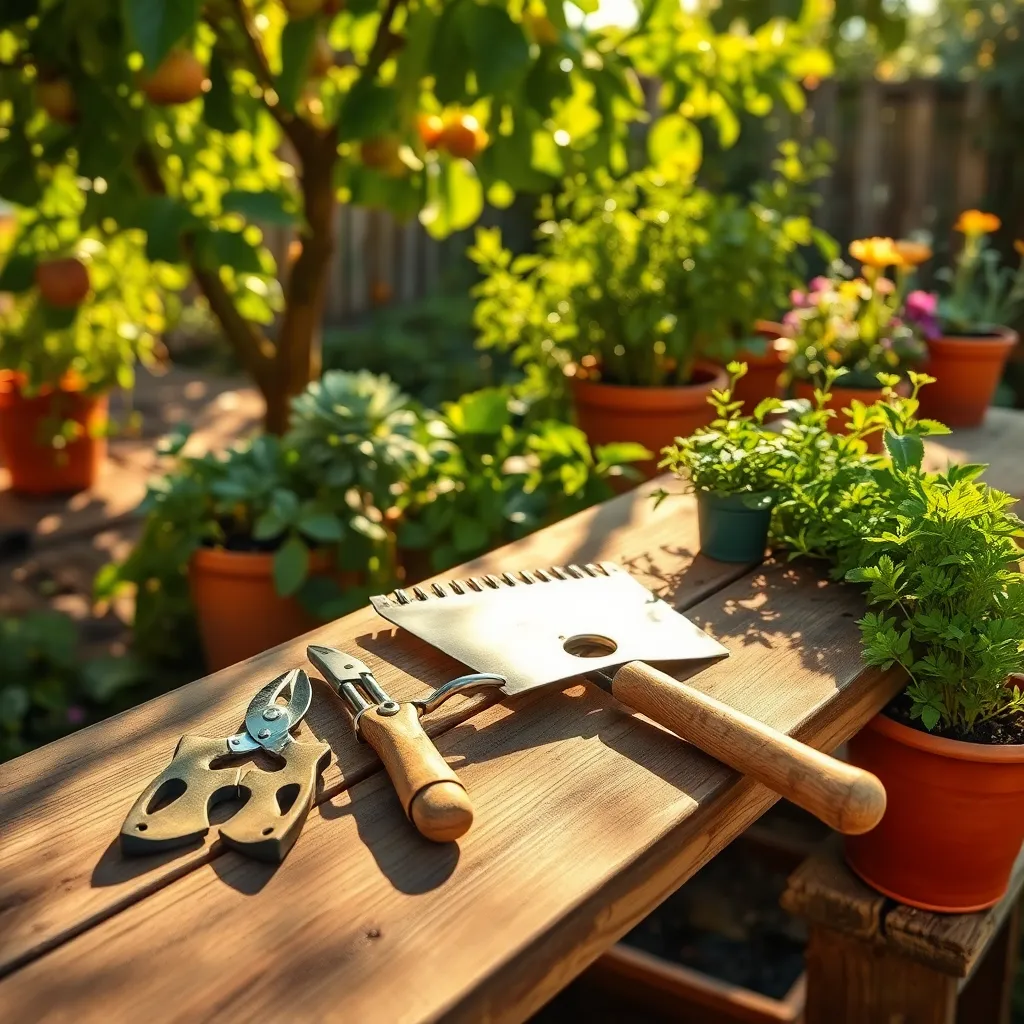
Proper tool maintenance is essential for ensuring their longevity and effectiveness in your garden. Clean your tools after each use by removing dirt and residue with a wire brush or a damp cloth to prevent rust and deterioration.
Sharpening your tools regularly will keep them efficient and make your gardening tasks easier. Use a mill file or sharpening stone to maintain the edges of pruners, shears, and hoes, paying special attention to the bevel angle for optimal performance.
Oil your tools to keep them in prime condition and prevent rust formation. A light coating of motor oil or linseed oil applied to metal surfaces and wooden handles will preserve their functionality and extend their lifespan.
Store your tools in a dry, protected area to avoid exposure to moisture, which can lead to rust and damage. Hanging tools on a wall or keeping them in a well-ventilated shed will help maintain their condition and ensure they’re ready for use when needed.
Conclusion: Growing Success with These Plants
In nurturing relationships that thrive, the “9 Must-Have Tools for Perennial Care” are indispensable. These tools include open communication, empathy, trust-building, shared goals, quality time, conflict resolution skills, appreciation, adaptability, and self-care. Together, they create a robust foundation for lasting connections. By embracing open communication, you lay the groundwork for understanding; through empathy and trust, you foster deeper bonds. Setting shared goals and dedicating quality time strengthens unity, while conflict resolution skills and appreciation maintain harmony. Adaptability and self-care ensure both partners grow and thrive individually and together.
As your actionable next step, choose one of these tools to focus on this week. Perhaps initiate a heartfelt conversation or plan a dedicated time for just you and your partner. By taking this small, intentional step, you are investing in your relationship’s future.
Remember, relationships are ever-evolving gardens that require consistent care. Bookmark this article so you can revisit these essential tools whenever you need guidance. By doing so, you’re setting yourself up for a future filled with love and understanding. Together, let’s nurture relationships that are not just enduring but flourishing.





